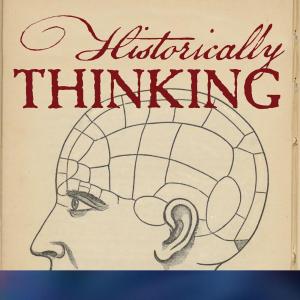Historically Thinking

Episode 333: City of Echoes
An Ambassador from the Kingdom of the Kongo to the Papal Court On July 20, 817, Pope Paschal began a project to transform the Church of Santa Prassede, the resting place of the sisters and martyrs, Pudenziana and Prassede, executed in the second century, legendarily believed to be daughters of the Roman senator Pudens, the first or one of the first converts of St. Peter himself. To accompany them in their rebuilt church, Paschal removed 2,300 bodies from the catacombs and interred them in walls that were covered with glittering, colorful mosaics, lit by hundreds of candles. It was symbolic of everything the Roman church had been, and had become: built upon the bones of martyrs, but now wealthy, sponsored by the Emperor of the West, and shepherded by a powerful Bishop, who at the very least was first among equals. Indeed, as my guest writes, Paschal had himself depicted “shoulder to shoulder with Peter, Paul, Pudenziana, and Prassede.” This was a key moment in the history of papal Rome–a period in the history of the city in which the Papacy was key to the identity of both the place and its inhabitants. With Constantine’s removal of the imperial capital to the new city of Constantinople, the papacy gradually became the point of reference for Romans, and then eventually for all of those people in western Europe who called themselves Christians. Eventually, even though its universal and awesome power had diminished by the middle of the nineteenth century, it still took an army to remove the Papacy from its position at the city’s heart. And still, from time to time, it has the ability to relativize all other powers in the city. My guest Jessica Wärnberg is a historian of the religious and political culture of Europe. She has written about popes, princes, inquisitors, and Jesuits. She is the author of City of Echoes: A New History of Rome, Its Popes, and Its People, which is the subject of our conversation today. For Further Investigation The episode is illustrated with a photograph of the Church of Santa Prassede, looking towards the altar and the portraits of Peter, Paul, Prassede, Pudenziana, and Pope Paschal in the apse. The small illustration is of the Kongolese ambassador to the Papal Court. If you're new to the podcast, and liked this episode, you'll also like my conversation with philosopher Scott Samuelson about his book Rome as a Guide to the Good Life: A Philosophical Grand Tour For a taste of that classical Roman stuff that we avoided in the discussion–or some of the lower layers of the Roman cake–try this conversation with Ed Watts about the later Roman Republic. Conversation with Jessica Warnberg [00:00:00] Al: Welcome to Historically Thinking, a podcast about history and how to think about history. For more on this episode, go to historically thinking.org, where you can find links and readings related to today's podcast, comment on the conversation and sign up for our newsletter. And consider becoming a member of the Historically Thinking Common Room, a community of Patreon supporters. [00:00:22] Al: Hello, on July 20th, 817, Pope Pascal, the first began a project to transform the Church of Santa Procede, the resting place of the sisters and martyrs, Pudenziana and Prassede, executed in the second century, legendarily believed to be daughters of the Roman Senator Pudens, who was himself believed to be one of the first or the first convert of St. Peter himself. To accompany the two sisters in their rebuilt church, Pascal removed 2300 bodies from the catacombs and interred them in walls that were covered with glittering colorful mosaics, lit by hundreds of candles. [00:01:00] It was symbolic of everything the Roman Church had been and had become built upon the bones of martyrs. [00:01:06] Al: Now literally so wealthy, sponsored by the Emperor of the West and shepherded by a powerful bishop who at the very least was first among equals indeed. As my guest writes,






 Visit Podcast Website
Visit Podcast Website RSS Podcast Feed
RSS Podcast Feed Subscribe
Subscribe
 Add to MyCast
Add to MyCast